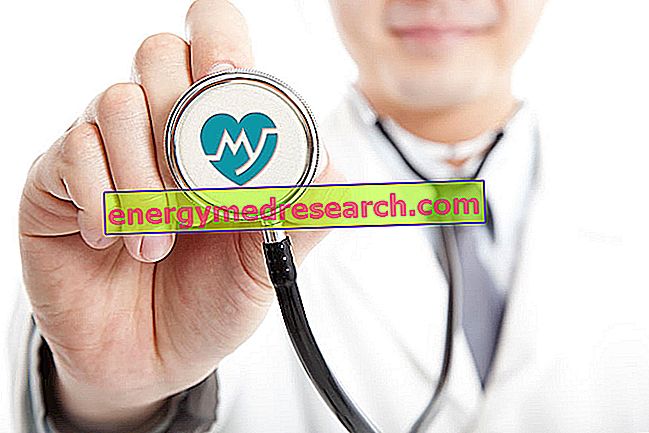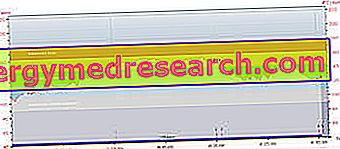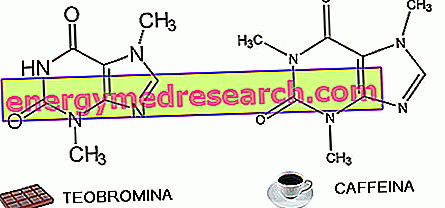Generality
Heart failure is a chronic, progressive condition in which the heart cannot pump enough blood to meet the body's needs. In essence, the heart muscle cannot keep up with its workload; initially, the heart tries to somehow compensate for this alteration, but over time it weakens and loses the ability to contract normally. As a consequence, the heart muscle cannot pump with sufficient force to push enough blood into the circulation (systolic insufficiency) or it loses its ability to relax normally and may not fill properly during the rest period between each beat (diastolic dysfunction).

Diagnosis
The initial diagnostic approach is based on the history, which allows us to gather information on the symptoms of heart failure and to assess the presence of health conditions that may have caused the weakening or stiffening of the heart muscle (hypertension, cholesterol high, diabetes, kidney disease, angina, coronary heart disease or other heart disease). The doctor proceeds with a complete physical examination to assess the presence of signs of heart failure:
- Dyspnea and pulmonary fluid (auscultating the lungs with a stethoscope);
- Swollen and bulging neck veins;
- Enlarged liver or swelling of the abdomen and legs (edema);
- Irregular heart beat or increased heart rate and abnormal heart sounds;
After the physical examination, several investigations may be indicated to investigate the cause and severity of heart failure:
- Blood test - to check the alteration of some parameters, which could indicate heart failure or some other disease;
- Respiratory function tests - to verify or exclude whether a lung problem is contributing to dyspnea;
- Chest radiograph - to determine the degree of heart failure. The survey often shows an enlargement of the heart muscle and may show signs of congestion or pulmonary edema;
- Electrocardiogram - records the electrical activity of the heart muscle and provides information on the presence or absence of alterations in electrical conduction and heart rhythm (revealing, for example, the presence of arrhythmias);
- Echocardiogram - it allows to examine the cardiac function and to verify the presence of possible alterations to the structures of the heart (heart valves, pericardium etc.). It should be performed in all cases of suspected heart failure, as it can help confirm the diagnosis and help determine the underlying cause of the alteration (key information to establish treatment).
Blood analysis
Blood tests can help identify if another condition is causing similar symptoms, such as some metabolism and kidney function disorders, anemia, diabetes, thyroid or liver disease.
Blood tests are used for:
- Help diagnose and monitor heart failure;
- Abnormal levels may indicate additional work on organs such as the kidneys and liver, often involved in heart failure;
- Identify the risks associated with heart disease (for example, a high level of cholesterol in the blood is one of the predisposing factors for coronary heart disease);
- Look for possible causes of heart failure or problems that can worsen the condition;
- Monitor the side effects of the drugs the patient takes.
The blood sample is also analyzed to detect type B natriuretic peptide, secreted when the heart is subjected to high levels of stress (also called BNP, an acronym that indicates the physiologically active substance, or NTproBNP, ie the N-terminal fragment of the propeptide). When this test is normal, heart failure is excluded. The level of BNP in the blood increases with the worsening of the symptoms of heart failure, while it decreases when the condition is stable. The BNP values also indicate the severity of heart failure, so they are able to provide information on prognosis. Higher levels of BNP / NTproBNP in the blood may indicate the presence of serious heart disease, while lower values may indicate milder forms. The natriuretic peptide dosage can also be used to diagnose a heart attack and monitor the response to treatment.
Echocardiogram
An echocardiogram is a procedure that uses high-frequency sound waves to obtain a detailed image of the structures of the heart. During the test, the patient is asked to lie on his left side and place his arm behind his head. A gel is applied to the chest and an ultrasound probe is placed at various points on the chest.
An echocardiogram provides a lot of useful information about the heart, including:
- How much the heart valves are functional and if they are damaged;
- How the heart contracts and forces blood to circulate throughout the body (systolic function);
- How the heart relaxes after each contraction and fills with blood (diastolic function);
- If there are passages or holes in the walls between the chambers of the heart, which allow blood to flow from one side to the other (intracardiac shunts).
During an echocardiogram a measurement of the effectiveness of the heart to function as a pump can be performed by evaluating the ventricular ejection fraction . This investigation consists of an estimate of the amount of blood entering the left ventricle during diastole and the relative percentage that is expelled in the subsequent contraction of the heart muscle. In a healthy heart the ejection fraction is approximately 60%. A value below 40% indicates that the heart is not able to pump adequate blood throughout the body.
Sometimes, different types of echocardiogram are performed, such as an ecoDoppler, which uses sound waves to measure the speed and direction of blood flow, or an echocardiogram under stress . This last test is performed to check how well the heart responds to stress and can help determine the type and level of exercise appropriate for the patient. The subject is asked to walk on a treadmill or to ride on an exercise bike while it is connected to an ECG device. During the test, heart rate and frequency, respiration, blood pressure and perception of fatigue are monitored. At the end of the stress phase, the same parameters are checked while the patient is sitting or lying down. The stress echocardiogram allows us to assess whether the heart normally responds to stress and whether the blood supply to the arteries that feed the heart is reduced.
Electrocardiogram (ECG)
An electrocardiogram (ECG) is a simple exam, which can help to define the cause of heart failure. The ECG detects and records the electrical activity of the heart and helps diagnose heart rhythm problems (whether it is constant or irregular). In case of heart failure, the ECG is almost always altered. An electrocardiogram can also show signs of a previous heart attack, which may be associated with the development of heart failure.
To find out what caused heart failure, further investigations may be needed, which may include:
- Coronary catheterization (angiography). In this test, a thin flexible tube (catheter) is inserted into a blood vessel in the groin or arm and guided, through the aorta, into the coronary arteries. A dye injected through the catheter makes the arteries that feed the heart visible on an X-ray, allowing the identification of possible alterations (coronary artery disease).
- Magnetic resonance and computed tomography. Additional imaging techniques allow us to evaluate alterations of the heart muscle and they are very accurate examinations both in establishing the cause of heart failure and in assessing its magnitude.
- Dynamic ECG according to Holter. Procedure to determine the electrical stability of the heart, using heart rate monitors worn continuously for 24 hours.
Chronic heart failure
Although in some cases it occurs in a severe and sudden manner (acute form), heart failure is often a progressive disease, with worsening which can be slow and gradual. The term " chronic heart failure " is used to describe a long-term condition. This is a serious illness, with the potential to significantly reduce life expectancy. The following signs may develop with worsening heart failure:
Left heart failure
- More and more difficult to move;
- Dyspnea at rest or when the patient is lying down (orthopnea);
- Waking up at night with breathlessness (paroxysmal nocturnal dyspnea);
- Cough with foamy sputum (pulmonary edema).
Right heart failure
- Venous ulcers in the lower limb;
- General swelling of legs, abdomen and, in men, of the scrotum;
- Possible hepatomegaly, if severe.
What can the doctor do?
- Give advice regarding risk factors, such as smoking, excessive weight and high blood pressure.
- Treat any obvious causes of heart failure.
- Prescribing drugs and, if necessary, planning a surgery, such as a coronary artery bypass (revascularization), a replacement of a damaged heart valve, etc.
- Regularly monitor the patient's health conditions.
Treatment can often slow the progression of the disease and substantially increase the quality of life.
Treatment
Heart failure is a chronic disease that requires permanent therapeutic management. Therefore, the treatment aims to find a combination of measures - including lifestyle changes, drugs, devices or surgery - that can improve heart function or help the body eliminate excess fluids.
Therapy can help you live longer and reduce your chances of dying suddenly.
In some cases, heart failure can be corrected by treating the underlying cause. For example, repair of a heart valve or control of an altered heart rhythm can reverse the progression of the pathological condition. However, for most people, heart failure therapy lasts a lifetime and involves balancing several effective treatments that can be managed over the long term, so that you have the best symptom control.
An effective therapy for heart failure can have the following advantages:
- Supports cardiac function;
- Improves symptoms;
- Reduces the risk of an exacerbation.
drugs
Life expectancy is linked to age, the severity of the condition and any other health problems that can coexist, but it also depends on what is done to reduce the risk of death. The therapy generally involves a combination of drugs designed to prevent or delay heart failure and the worsening of associated symptoms. These drugs may include:
- Angiotensin-converting enzyme inhibitors (ACE inhibitors). These drugs often have a positive impact on heart performance and can improve quality of life. ACE inhibitors are vasodilators, meaning they act on blood vessels to reduce blood pressure, improve blood flow and decrease the workload of the heart. The most common side effect is the appearance of a dry cough.
- Angiotensin II receptor antagonists (ARB). ARBs work similarly to ACE inhibitors, "widening" blood vessels and reducing pressure. Side effects include hypotension and high levels of potassium in the blood. These drugs can be a viable alternative for people who do not tolerate ACE inhibitors.
- Digoxin. This drug increases the strength of heart muscle contractions and tends to slow down the heart rate. Digoxin can improve symptoms and reduce the need for hospitalization, but it does not seem to prolong life. This drug is recommended for people with symptoms despite treatment with ACE inhibitors, beta-blockers and diuretics, and is indicated in patients who have both heart failure and atrial fibrillation.
- Beta blockers. Usually, they are used to treat people with heart failure due to systolic dysfunction. This class of drugs protects the heart from the effects of adrenaline and norepinephrine, reducing heart rate and blood pressure. Beta-blockers can control the symptoms of heart failure and improve heart function. They reduce the risk of hospitalization and contribute to prolonging life expectancy in patients with low ejection fraction. However, beta blockers may not be suitable for people with asthma.
- Diuretics. They help to expel excess fluids accumulated in the body, relieve swollen ankles and breathlessness caused by heart failure. Diuretics affect potassium and magnesium levels, so your doctor may prescribe supplements to compensate for their loss and monitor their blood levels through regular blood tests.
- Aldosterone antagonists. They work similarly to diuretics, but they can also help reduce the healing of heart muscle; they improve symptoms, reduce the risk of hospitalization and prolong life in people with a low ejection fraction. The most serious side effect of these drugs is that they can cause an increase in the level of potassium in the blood.
Your doctor may prescribe other drugs in combination with those indicated for heart failure, such as a statin to lower cholesterol and medications to help prevent blood clots.
For further information: Heart Failure Medications »
Surgery and medical devices
In some cases, doctors recommend surgery to treat the underlying problem, such as repairing or replacing a damaged heart valve or coronary bypass surgery if severely blocked arteries are contributing to heart failure.
Based on the characteristics of the disease and the causes, the surgeon can indicate the use of:
- Implantable cardiac defibrillators (ICD). The ICD is a device similar to a pacemaker, responsible for controlling heart rhythm. If the heart starts beating at a dangerous rate or stops, the ICD tries to stimulate the heart to restore the normal rhythm again, with an electric shock.
- Cardiac resynchronization therapy (CRT) or biventricular stimulation. A biventricular pacemaker sends electrical impulses to both ventricles to make them beat synchronously and more efficiently, improving the function of the cardiac pump.
- Left ventricular assist devices (LVAD). These mechanical devices are implanted in the abdomen or chest and are connected to a weakened heart to help it pump. At first, doctors used LVADs to help keep heart transplant candidates alive while waiting for a donor. Now, they are also used as an alternative to transplantation, especially for some patients with severe heart failure who cannot be given a heart transplant.
- Heart transplant. When surgery and drug therapy do not help, a heart transplant may be the only effective treatment option. Heart transplantation can greatly improve the survival and quality of life of some people with severe heart failure. However, candidates often have to wait months or years before a compatible donor is found.



